LATEST INSIGHTS
As you may already know, there are various types of business loans in Australia from which to choose. These may include equipment finance (otherwise known as chattel mortgage), overdrafts, and invoice finance. Usually, you can choose to pay a variable or fixed interest rate while selecting the best frequency of repayments for your situation (monthly, quarterly, or annually).
These business loans can help you manage your cash flow while funding your business's expansion and growth. A secured or unsecured business loan may be suitable if you're looking for start-up costs, capital investments, commercial property acquisition, or refinancing.
Before we dive into actually filling out your business loan application, we'll take a look at things you can do to improve your chances of success. This includes assessing financial forecasts, deciding on a type of loan, and gathering additional documents and paperwork, to name a few.

6 Steps Before Applying for a Business Loan
1. Assessing Your Funding Needs
First things first, before anything else can happen, you need to have a basic understanding of your business finances. In this section, we'll cover how to analyse your business finances and set up a cash flow statement. By doing this, you'll better understand your current business performance and identify areas for growth.
1.1 Analysing Business Finances
In order to properly analyse your business finances, take a closer look at the following financial documents of yours:
- Budget: You should begin with your business budget; this is a statement that outlines the expected income and expenditure of a business within a particular period of time. With budgeting, you get to know the actual financial position of your business besides getting to compare your figures and hence identify areas that require adjustments.
- Balance Sheet: The balance sheet offers a perspective of your business's financial situation in a certain period of time. It lists your assets, liabilities, and equity, helping you understand what your business owns versus what it owes. Analysing this document can help you determine your business’s net worth and ability to cover short-term obligations.
- Statement of Cash Flow: Your cash flow statement tracks the cash flow in and out of your business over time. This document is important in analysing trends in the flow of cash, both inflow and outflow so that future cash flow requirements can be predicted.
- Profit & Loss Statement: Another name for a profit and loss statement is an income statement; it presents a statement of your business’s revenue, cost, and expenses for a stated period.
While pulling together these documents, keep your eye on trends that may be unusual, as this would indicate areas that need improvement, including:
- Low profit margin
- Not staying within your spending budget
- Existing business debt levels
- Timeframes with low/ high cash flow
1.2 Setting Up a Cash Flow Statement
When developing your cash flow statement, you will be able to see your current business cash income, future cash income, actual expenses, and more.Cash Flow Forecasting In addition to tracking past and present cash flow, we can predict future financial resource needs. A cash flow forecast estimates your future sales and expenses, showing whether your business will generate enough income to cover its costs. By anticipating or knowing in advance about cash flow gaps, you can proactively avoid debt and maintain a healthy financial position.
To create a cash flow forecast, simply input estimated figures for future periods into your cash flow statement. Regularly updating this forecast will help you avoid financial challenges and take advantage of some opportunities.
Creating Your Cash Flow Statement
To begin, download anycash flow statement template. This template will help you document your cash flow data in terms of actual and expected ones. As you complete the statement, clearly label any estimated figures and state whether they are inclusive or exclusive of GST (Goods and Services Tax).
Completing Your Cash Flow Statement
Follow these steps to complete your cash flow statement:
- Opening Balance:
- In the first month, your opening balance is your starting bank balance. Use the closing balance from the previous month as your opening balance for subsequent months.
2. Cash Incoming:
- Cash incoming encompasses all money that comes into your business. When forecasting, consider all potential/ anticipated income sources, including sales, debtor receipts, grants, andtax rebates. It is a good idea to look at previous years to identify seasonal trends and predict when money will come in.
3. Total Incoming:
- Add up all incoming cash items to calculate the total incoming for the month.
4. Cash Outgoing:
- Cash outgoing refers to all payments made by your business. Forecasting these figures requires you to anticipate necessary expenses, such as accountant fees, advertising, purchases, rent, and utilities. In order to avoid the same or similar expenditures and to be able to forecast the expenses that are likely to occur in the future, one should review the expenses that have been incurred in the past.
5. Total Outgoing:
- Add up all the outgoing cash items to get the total outgoing for the month.
6. Monthly Cash Balance:
- Calculate the monthly cash balance by subtracting the total outgoing from the total incoming.
7. Closing Balance:
- Last but not least, the closing balance is determined by adding the opening balance to the total incoming and then subtracting the total outgoing. This closing balance becomes the opening balance for the next month.
2. Preparing a Business Plan
Often, potential lenders will want to see your business plan before lending money to understand your business goals and financial history. Above the goal of loaning money, having a business plan will help you prioritise efforts and learn about potential hurdles that might hinder success.
2.1 Tips to Develop Your Business Plan
1. Determine the Purpose of Your Business Plan
As you've landed on this page, we reckon that the purpose of your developing a business plan is so you can share it with potential business loan firms. However, you may have alternative reasons for developing your business plan (like guiding your internal team, for example). Understanding the audience for your plan will help you tailor it to meet their specific needs.
For instance, if you’re presenting the plan to lenders, they will be most interested in your financial projections, market analysis, and repayment strategies. Tailor your content to emphasise the most relevant information to the readers.
2. Prepare Your Finances
Your business plan must include a detailed financial section. This is especially important if you’re seeking financing. Lenders and investors need to see that your finances are well-organised and that your business is in a strong financial position.
This section should cover:
- Current Financial Status: Outline how much capital your business currently has and how it has been allocated.
- Funding Requirements: Clearly state how much money you need and why. Be realistic and specific to avoid asking for more than necessary.
- Financial Projections: Provide forecasts of your expected revenue, expenses, and profits. If you’re a startup without historical financial data, use estimates but ensure they are grounded in research and reasonable assumptions.
3. Write Your Executive Summary Last
Even though it appears at the beginning of your business plan, the executive summary should be the last section you write. This summary entails the main points of your plan into a concise overview, highlighting your business, market, goals, and unique selling propositions.
Aim to capture the essence of your business in as few words as possible without omitting critical details. This section should grab the reader’s attention and make them want to learn more about your business.
4. Seek Professional Assistance
Writing a business plan requires time, research, and careful preparation. If you’re not confident in your ability to complete the plan yourself, consider seeking help from a professional. Business advisers, mentors, or coaches can provide valuable feedback and ensure your plan is thorough and well-presented.
5. Review and Update Your Plan Regularly
Your business plan is not static; it should evolve as your business grows and market conditions change. Regularly reviewing and updating your plan will help you stay focused on your goals and ensure your strategy remains relevant.
6. Protect Your Business Plan
When sharing your business plan with third parties, protecting your business’s confidential information is essential. Consider having recipients sign a confidentiality agreement if your plan contains innovative practices, products, or services.
Additionally, include a disclaimer in your plan asking readers not to disclose its contents. This added layer of protection can safeguard your business ideas and strategies from being shared or used without your consent.
2.2 Business Plan Template
Feel free to use our business plan template by making a copy and using it to save you time and resources.
Download Our Free Business Plan Template
3. Understand Your Financial Limitations
By understanding your financial limitations better, you'll be more capable of repaying any business loan. For this to happen, work out each of the following based on your business:
- Determine whether you need access to funds upfront or can draw them as needed.
- Calculate the maximum repayment cost you can comfortably manage.
- Assess your loan-to-value ratio (LVR).
- Identify business assets you can offer as collateral if required.
- Consider who might be willing to guarantee your loan if a guarantor is necessary.
- Evaluate how much equity you currently hold.
- Decide the maximum percentage of your business you will offer investors.
4. Choose a Type of Business Loan
There are a lot of loan options available in Australia, which is why it's important to understand your business needs and align those with the best loan type. So, if you haven't already completed the above-mentioned steps, we suggest you do so now.
The choices you make will depend on factors such as your specific business requirements, the duration of the loan, and the terms associated with it.
Here’s an overview of some common business loan types in Australia:
4.1 Common Types of Business Loans
1. Business Loan
A business loan is a lump sum of money provided to your business, which you repay over a specified period. The terms of the loan, including the loan amount, interest rate, and repayment schedule, can vary widely. You can opt for a fixed or variable interest rate, depending on your financial situation.
Potential Benefits:
- Flexibility to choose between fixed or variable interest rates.
- Various repayment options, such as principal and interest or interest-only.
- A clear and defined loan term allows for better financial planning.
Potential Disadvantages:
- The loan must be repaid in full by the end of the agreed term.
- No redraw option is available for fixed-rate loans.
- The loan account cannot be used as a transaction account.
- Lenders often prefer security, which may need to be linked to the loan.
2. Business Overdraft Facility
A business overdraft, or line of credit, is typically linked to your business transaction account. It allows you to access funds as needed, even when your account balance is low. You repay the overdraft with deposits back into the account, and interest is only charged on the amount used, not the total overdraft limit.
Potential Benefits:
- Ideal for medium to long-term seasonal cash flow needs, such as stocking up during busy periods or hiring additional staff.
- It can be directly linked to your business transaction account for ease of access.
- No set expiry date, providing ongoing access to funds.
- Interest is only charged on the borrowed amount.
Potential Disadvantages:
- Generally, higher interest rates than standard business loans.
- Interest rates are variable, which could lead to higher costs over time.
- Lacks flexibility in repayment options, such as interest-only payments.
- No defined repayment schedule, which could complicate financial planning.
3. Finance Lease
A finance lease allows you to use an asset, such as a car, machinery, or business equipment, for a fixed period. The lender purchases the physical asset on your behalf and leases it to you for the duration of the contract. At the end of the lease period, you can return the asset or make a residual payment to retain it.
Potential Benefits:
- Flexibility to use an asset without needing to purchase it outright.
- Repayments may be tax-deductible, reducing your overall taxable income.
Potential Disadvantages:
- You do not own the asset; the lender retains ownership.
- The asset must be returned at the end of the lease term unless you opt to pay the residual value.
4. Commercial Hire Purchase
A commercial hire purchase allows your business to acquire assets by making regular payments over an agreed period of time. The lender buys the asset on your behalf, and once all payments, including the final payment, are made, ownership is transferred to your business.
Potential Benefits:
- You own the asset at the end of the term, allowing for long-term use and investment.
- Both the interest on the finance and the asset depreciation may be tax-deductible.
Potential Disadvantages:
- Ownership is only transferred at the end of the contract, meaning you don’t own the asset during the repayment period.
- The financial commitment could impact your business's cash flow over time.
5. Chattel Mortgage
A chattel mortgage, often called a goods loan, is a popular option for financing assets like business vehicles and equipment. Your business purchases and owns the asset from the start of the loan term, with regular repayments made over an agreed period until the loan is fully repaid.
Potential Benefits:
- You own the asset from the beginning of the loan term, giving you full control over its use.
- The interest on the loan and depreciation of the asset may be tax-deductible.
Potential Disadvantages:
- If you want to upgrade the asset, you must sell it yourself.
- The financial commitment requires careful planning to ensure ongoing cash flow.
6. Invoice Finance
Also known as accounts receivable finance, invoice finance allows you to quickly access cash by using your outstanding invoices as collateral. Normally, you can access up to 85% of the value of your approved outstanding invoices.
Potential Benefits:
- Supports cash flow by providing immediate funds to cover expenses.
- Unpaid invoices can be ‘sold’ to the lender in exchange for cash, providing quick access to capital.
- No additional security is required, as the invoice itself acts as collateral.
- Funds are generally received within 24 business hours, offering rapid financial relief.
Potential Disadvantages:
- You do not receive the full value of the invoice, as the lender retains a portion.
- This option may lead to lower overall returns if frequently used.
5. Organising Financial Documents
In order to start your application process for a business loan (before speaking to a lender), you'll need to have the following documentation ready:
- Proof of identification
- Detailed business plan
- Financial forecasts
- Financial reports for the last 2 - 3 years (if this is available)
- Personal income information/ proof
- Ratio calculations
Ready to take your business to the next level with tailored lending solutions?
6. Getting Expert Advice
It may happen that you don't feel confident answering complex financial questions when you apply for financing (or feel lost in this outlined process), which is why it's important to seek expert advice from trusted sources. The best way to ensure all your financial needs are met and to streamline the entire application process is by partnering with a trusted broker like our team at Synergy. We offer expert guidance on securing the right loan and provide comprehensive support.
With access to our accounting teams, we offer a unique combination that allows us to help with all aspects of the application and provide ongoing business advisory services, ensuring your financial strategy is solid and your business can thrive.
After completing the six steps mentioned above, you're ready to apply for that business loan! The last tip we can give you is the following:
- Weigh your different financing options: Although this might sound obvious, sometimes this step can be overlooked, and businesses can choose the seemingly better loan option. Find out more about interest rates that may change while ensuring you're loaning from a trusted finance provider.
Frequently Asked Questions
Is It Hard to Get a Business Loan in Australia?
Getting a business loan in Australia can be challenging, especially if your financials aren't strong or you lack collateral. However, many businesses can secure funding with proper preparation and a solid business plan.
How Much Deposit Do You Need for a Business Loan?
The deposit required for a business loan in Australia varies but is typically around 10% to 30% of the loan amount, depending on the lender and the type of loan.
How Many Years Should It Take to Pay Off a Business Loan?
The repayment period for a business loan usually ranges from 1 to 25 years, depending on the loan amount and terms, but most businesses aim to pay off loans within 3 to 5 years.
Secured Vs. Unsecured Loans: What's The Difference?
Secured loans require collateral and offer lower interest rates, but they carry the risk of asset loss if you default. Unsecured loans don’t require collateral but often have higher loan interest rates and stricter approval criteria.








